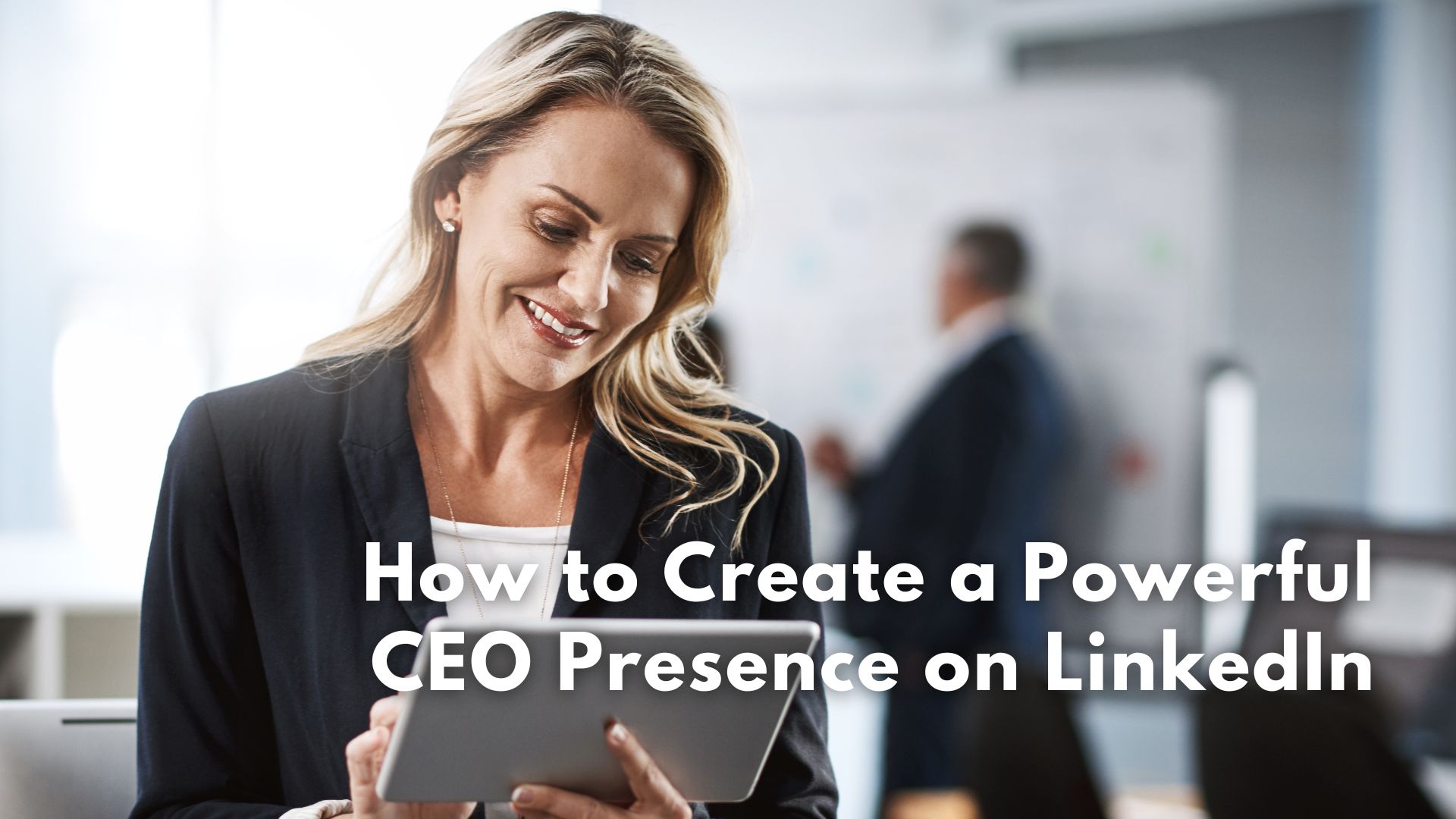For today’s CEOs, LinkedIn is no longer optional. It’s one of the most effective tools you have to communicate directly with employees, customers, partners, investors, and other stakeholders. But to use it well, you need a plan.
Here’s a step-by-step approach to building a strong CEO presence on LinkedIn. (This is similar to what we do when we work with clients, just a little simpler.)
Key Takeaways:
-
A clear leadership narrative is the foundation of a powerful LinkedIn presence for CEOs.
-
Targeting the right audience helps CEOs tailor LinkedIn content that builds trust and relevance.
-
Consistent content pillars give structure to executive communication and showcase thought leadership.
-
Authentic, personal engagement on LinkedIn strengthens CEO visibility and credibility.
-
A well-managed LinkedIn presence allows CEOs to lead confidently in both calm and crisis.
Step 1: Define Your Leadership Narrative
Start by clarifying the story you want to tell. This includes:
- Your company’s vision and direction
- Your leadership philosophy
- Core values that drive your decisions
- Key priorities for the next 12-18 months
Your narrative serves as the foundation for everything you share on LinkedIn. It helps ensure your messaging is clear, consistent, and aligned with both your personal and corporate goals.
Step 2: Identify Your Key Audiences
As CEO, you’re speaking to multiple audiences at once. On LinkedIn, your primary audiences typically include:
- Customers
- Employees
- Investors and board members
- Industry peers
- Partners
One or two of those audiences will be more critical than the others at this point in time. Which do you need to focus on right now?
Knowing who you’re speaking to helps design a presence that resonates with the people who matter most.
Step 3: Establish Content Pillars
Choose a few core topics that you will return to regularly. These might include:
- Education – what does your market and the industry as a whole need to appreciate?
- Team accomplishments and culture highlights
- Industry trends and commentary
- Leadership lessons and personal reflections
- Company updates and milestones
These recurring themes give your content structure and keep your audience engaged.
Step 4: Create a Posting Rhythm
You don’t need to post every day to be effective. Instead:
- Aim for consistency (for example, 2–4 times per month)
- Balance between original posts, reposting company content with personal commentary, and engaging with others’ content
- Leave space for timely, opportunistic posts as needed
Step 5: Lead with Authenticity
Don’t let your team make your posts bland and corporate. On LinkedIn, authenticity builds trust. People want to hear directly from you, not a rehash of corporate talking points.
Your LinkedIn posts should sound like something you would actually say – your employees should recognize your voice.
Step 6: Engage with Your Network
Posting is only part of your presence. Strong CEOs also:
- Congratulate peers and partners
- Contribute to industry conversations
- Acknowledge employees publicly
Regular interaction reinforces relationships and expands your reach.
Step 7: Be Prepared for Difficult Moments
Crises will happen. Having an established presence gives you a platform to:
- Address concerns quickly and directly
- Reassure stakeholders
- Control the narrative
Work with your communications team to map out likely scenarios and develop flexible response plans.
Step 8: Align with Corporate Communications
Your personal LinkedIn presence should complement your company’s overall communications strategy. Coordinate with your team to:
- Ensure messaging consistency
- Share approved company content when appropriate
- Reinforce company values through your personal lens
This alignment strengthens both your personal and corporate brands.
LinkedIn Is Your Leadership Tool
A well-managed LinkedIn presence amplifies your leadership, strengthens relationships, and positions you as a reliable voice in a fast-moving environment.
We’re here to help. Our team has worked with thousands of CEOs and senior executives to write LinkedIn profiles, design LinkedIn strategies, and craft LinkedIn content that advances their goals. If you’re ready to build or refine your CEO presence, let’s talk.

